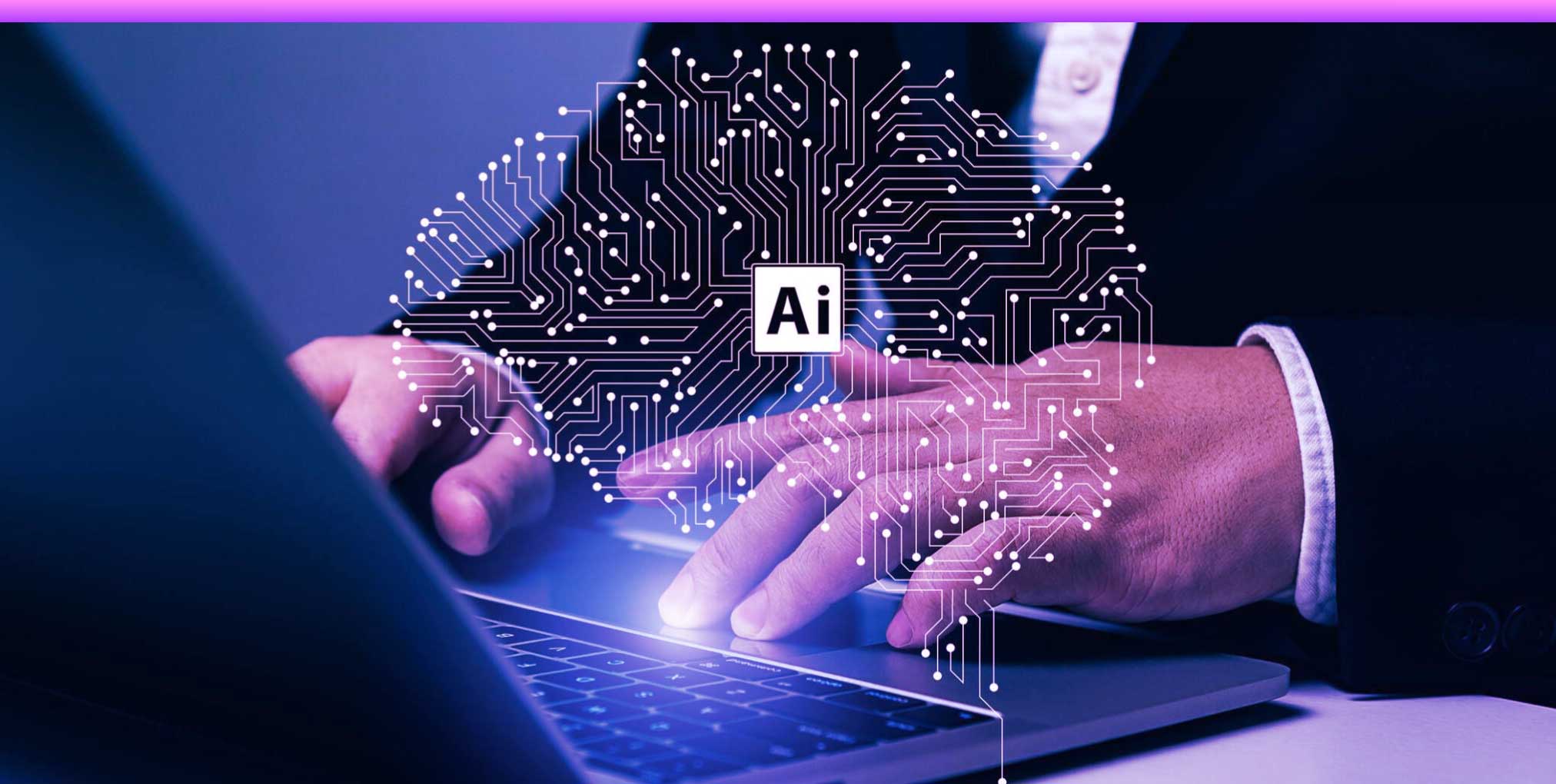

January 2, 2024
What is AI Software Development: A Comprehensive Guide
Artificial Intelligence (AI) has become a game-changer in today’s fast-paced world of technology. It’s not just transforming industries; it’s changing how we interact with technology. AI software development is at the heart of this AI revolution, which empowers businesses to tap into the potential of machine learning, natural language processing, and deep learning to create innovative solutions.
In this guide, we’ll dive deeply into AI-based software development solutions. We will break down its core principles, real-world applications, and the essential steps.
AI has revolutionized how businesses operate, offering the ability to automate routine tasks and deliver personalized experiences to customers. However, navigating the complexities of AI software development can be daunting for many. The journey can seem overwhelming, from choosing suitable algorithms to training models and implementing solutions.
This article will serve as a comprehensive guide for businesses looking to utilize the power of AI software development solutions.
The Key Components of AI-Based Software Development
Embarking on the AI development journey may seem intimidating, but fear not – it’s achievable when you follow a well-defined process and use the right resources. In this guide, we’ll walk you through the step-by-step AI software development process, making it easy to understand. From collecting data to rigorous testing, we’ll cover each stage and its importance.
Data Collection
AI-based software development begins with collecting data. Think of data as information that computers can use to learn and make smart decisions, like a digital brain.
Imagine you’re teaching a robot to recognize different types of fruits. To do this, you’d need lots of pictures of apples, oranges, and bananas. These pictures are your data. The more pictures you have, the better the robot becomes at telling the fruits apart.
In AI for software development, you collect data that helps computers understand and learn about specific software-related things. This data could be anything from code snippets to information about how people use software.
Now, why is good data important? Just like our robot needs clear pictures to learn, AI needs clean and relevant data to work well. During this Data Collection step, the AI software development company should gather and organize the information neatly. This data will be the foundation for teaching AI to do smart things in software development. You can utilize tools such as Google Cloud Data Labeling Service or Amazon Mechanical Turk to assist in labeling your data.
Data Preparation

After successfully collecting your data, the next crucial phase is preparing it for integration into the AI model. This step is like getting your ingredients ready before cooking a meal. It ensures that the data is in optimal shape for the AI software to work its magic effectively.
Think of it this way: you would want to avoid using spoiled or duplicate ingredients when making a meal, right? Similarly, in AI software development solutions, you aim to eliminate any unnecessary or redundant data. Here’s what data preparation entails:
Cleaning Data:
This involves removing any irrelevant or duplicate data. Just as you’d discard spoiled ingredients from your kitchen, you remove data that won’t contribute to the AI’s learning.
Handling Missing Values:
Sometimes, data might have gaps or missing parts. We need to address these gaps by filling them in or finding alternative ways to deal with missing information.
Standardizing Data Format:
Imagine following a recipe with different measurements. You’d want to standardize them for consistency. Similarly, you need to ensure that data is in a consistent format, making it easier for the AI to understand.
Various tools like Trifacta, Paxata, and DataRobot can be incredibly helpful to make this process smoother. They streamline the data preparation and cleaning tasks, saving time and ensuring the data is in its best possible condition for the AI model.
Model Selection
Now that your data is primed and ready, it’s time to pick the right AI model for the task. Think of this step as selecting the right tool for a specific job. The choice depends on your problem and the data you’ve gathered.
Imagine you’re building a vehicle. Wouldn’t you use the same engine for a sports car and a heavy-duty truck? Similarly, in AI development, we select the model that’s best suited for the job. Here are a few standard models in the AI toolkit:
Neural Networks:
Neural networks are at the forefront of modern AI. They are inspired by the structure of the human brain, with layers of interconnected nodes that process and learn from data. They are widely used for image and speech recognition and natural language processing tasks. They excel in jobs that require pattern recognition and nonlinear relationships within data.
Decision Trees:
Decision trees are a visual representation of decision-making processes. They consist of branches and nodes, each representing a decision based on a data feature. The tree structure is used to classify or predict outcomes. Decision trees are commonly used in classification and regression tasks. For example, they can help decide whether an email is spam or not or predict the price of a house based on its features.
Logistic Regression:
Despite the name, logistic regression is used for classification, not regression. It’s a simple and linear model that calculates the probability of an input belonging to a specific class. Logistic regression is often used for binary classification tasks, such as predicting whether a customer will buy a product (yes/no) based on age, income, and purchase history.
We have tools like TensorFlow, PyTorch, and Scikit-learn to make this selection process easier. These tools assist you in not only choosing the right model but also implementing it effectively.
Read More: Devin AI Software Engineer – Beginning of a New Era
Model Training
Once you’ve chosen the model that best aligns with your AI software objectives, it’s time to teach it using your data. Imagine it as coaching a new team member to excel at a specific task – the model needs guidance and practice to get it right.
Here’s what Model Training entails:
Adjusting Parameters:
Models come with various settings and parameters. You tweak these settings during training to help the model understand your data better. It’s like adjusting the dials on a musical instrument until you get the perfect sound.
Evaluating Performance:
As you train the model, you continuously check its performance. Is it making accurate predictions? Is it improving with each round of training? It’s similar to tracking the progress of new employees to ensure they’re meeting your company’s standards.
Achieving Desired Accuracy:
The ultimate goal of model training is to achieve the accuracy needed for your AI-based software development project. This accuracy level ensures that the model can perform its intended task effectively.
Various tools like Google Cloud AI Platform, Microsoft Azure Machine Learning, and Amazon SageMaker come into play to assist in this crucial phase. These tools provide the infrastructure and resources needed to train your model efficiently.
Model Deployment
Once your AI model is trained and ready, it’s time to implement it in a real-world production environment. Think of this step as launching a newly designed product into the market – it needs to perform flawlessly when it’s in the hands of users.
Here’s what Model Deployment involves:
Integration into Business Process:
You seamlessly integrate the model into your existing business processes, allowing it to contribute its AI-powered insights where they matter most.
Handling Real-Time Data:
Your deployed model should be able to handle incoming data in real-time, just like a traffic signal responds to changing traffic conditions. It should make decisions quickly and accurately based on the data it receives.
Ensuring Reliability:
In a production environment, reliability is key. Your model should consistently deliver the expected results without delays. Think of it as your product meeting customer expectations with every use.
AI software development companies use tools like Kubernetes, Docker, and AWS Lambda. These tools help you deploy, manage, and maintain your model in a production environment, ensuring it performs reliably and efficiently.
Evaluating and Testing

After your model is up and running in a production environment, it must be tested to ensure it delivers as expected. Think of this step as quality control for your AI solution – you want to ensure it works correctly and reliably.
You measure how accurately your model is making predictions or decisions. It’s like checking the precision of a measuring instrument to ensure it’s giving you the correct readings.
Testing the speed at which your model operates is crucial, especially for real-time applications.
Your model needs to handle various types of data without faltering. To streamline this testing process and ensure a thorough evaluation, you can use tools like Pytest, Selenium, and JUnit. These tools automate testing procedures, making it easier to assess the accuracy, speed, and robustness of your AI solution.
Read More: Top 10 Reasons to Hire a Dedicated AI Development Team
How to choose the right AI software development company?
Choosing the right AI software development services company is a big deal. It can make or break your AI project’s success. With so many options out there, it can be tricky to pick the perfect partner. This guide is here to help you make a smart choice. Whether you’re starting a new AI project or improving an existing one, this guide gives you easy-to-follow tips for finding the best AI software development company.
Define Your Project Goals
Before you dive into your search for an AI development partner, take the time to define your project’s specific requirements. Ask yourself:
What problem are you aiming to solve with AI?
Do you already have relevant data, or do you need assistance in gathering it?
What are your project’s objectives and goals?
Having a crystal-clear understanding of your goals is like drawing a roadmap. It guides you in identifying the ideal AI software development solutions company that aligns with your project’s needs.
Look For Expertise
When you’re in the process of selecting an AI development team, expertise is paramount. AI and machine learning are intricate domains that demand a profound grasp of statistics, mathematics, programming, and related disciplines. Here’s what to keep in mind:
Skills and Experience:
Seek developers with the necessary skills and practical experience in AI and machine learning. Look for evidence of past projects that align with your objectives. It’s like hiring a chef with a proven track record of preparing your desired cuisine.
Academic Qualifications:
Academic qualifications in AI and machine learning can indicate deep knowledge in the field. Degrees or certifications can help you identify professionals with formal training in these complex areas.
Specialization:
Consider whether the developers have specialized in areas relevant to your project. AI is a broad field, and having expertise in specific niches, such as computer vision, can be advantageous for certain projects.
In summary, expertise is the cornerstone of a successful AI software development partnership. Look for individuals or companies with the right knowledge and experience to ensure that your AI project is in capable hands.
Check the Portfolio
When you’re in the process of evaluating an AI development team, it’s vital to assess the quality of their work. Here’s how to go about it:
Portfolio and Previous Projects:
Begin by examining their portfolio and previous projects. This provides valuable insights into the kind of work they’ve done in the past. Look for evidence of projects that align with your specific needs and objectives.
Quality Standards:
Pay close attention to the quality standards demonstrated in their previous work. Assess whether their solutions are robust, reliable, and efficient. You want to partner with a team that can deliver high-quality AI solutions, just as you would expect a craftsman to produce top-notch products.
Client Testimonials and References:
Feel free to ask for client testimonials or references. Hearing from previous clients about their experiences can give you a real-world perspective on the team’s capabilities and professionalism.
Evaluating the quality of an AI software development company is essential in ensuring they can deliver solutions that meet your standards and requirements. You want assurance that they can deliver a solid, dependable outcome.
Cost Evaluation

AI software development solutions can be a significant investment, so it’s imperative to factor in the cost when deciding. Here’s what to keep in mind:
Budget Alignment:
Start by establishing your budget constraints. Determine how much you can allocate to your AI project. It’s akin to setting a budget for any other significant endeavor.
Value Over Price:
While it’s tempting to opt for the most cost-effective option, remember that the quality of the AI software development is paramount. Don’t compromise on quality for the sake of saving costs. Consider the long-term benefits and value a high-quality team or tool can bring, even if it involves a slightly higher upfront cost.
Return on Investment (ROI):
Assess the potential ROI of your AI project. A well-executed AI solution can yield substantial returns, making the investment worthwhile. Evaluate whether your chosen team or tools have a track record of delivering strong ROI.
On-going maintenance and support
AI projects often entail complexity, and having continuous support is vital for a successful journey. Seek out teams that provide ongoing support from both project managers and the development team. Effective communication and assistance from these experts can be invaluable as your project progresses.
Ongoing support ensures that any unexpected issues during your AI project are swiftly addressed. Consistent support helps ensure your project runs smoothly from start to finish. It promotes transparency, accountability, and a collaborative approach to overcoming hurdles.
Conclusion
AI for software development is not just a technological advancement; it’s a seismic shift reshaping entire industries and expanding the horizons of what can be achieved with technology.
The journey has only just begun, and as AI continues to evolve, its applications are becoming even more diverse than we can currently envision. AI software development services offer a gateway to utilize AI’s potential. It provides the expertise and tools needed to bring AI-powered projects to success. AI Chatbot development is a prime example of how AI can revolutionize user interactions and automate customer service.
In this ever-changing world, being at the front of the AI revolution isn’t just an option – it’s a must. People and businesses that adopt AI development and care for security are in the best position to guide us into a future where AI keeps making software development more powerful.
FAQS
How to use AI in software development?
Incorporating AI in software development involves integrating AI algorithms and models to automate tasks, enhance user experiences, or make data-driven decisions. For instance, you can use AI to automate code testing, detect and fix bugs, or even develop predictive features that improve software functionality.
How AI impacts software development?
AI has a profound impact on software development by streamlining processes and increasing efficiency. It empowers developers to automate repetitive tasks, leading to faster development cycles and reduced errors. Additionally, AI-driven analytics can provide valuable insights into user behavior, enabling developers to create software that better aligns with user needs and preferences.
What is the best AI development software?
The choice of AI development software depends on your specific project requirements and preferences. TensorFlow, PyTorch, and scikit-learn are popular choices, each excelling in different aspects of AI development. TensorFlow is renowned for its flexibility and wide-ranging applications, while PyTorch is favored for its ease of use and strong support for neural networks. Scikit-learn is excellent for machine learning and data analysis tasks.
Where should I start with AI development?
Starting with AI development involves acquiring a solid foundation in AI fundamentals, such as machine learning and deep learning. You can begin by learning programming languages like Python, which has robust libraries for AI. Then, explore AI libraries, frameworks, and tools, gradually working your way up to more complex AI projects.
Which software is best for making AI?
TensorFlow and PyTorch are widely recognized as two of the best platforms for building AI models. TensorFlow offers extensive support for deep learning and a strong ecosystem, while PyTorch is praised for its dynamic computation graph and user-friendly approach, making it an excellent choice for research and prototyping.
Which software is used for AI programming?
AI programming is predominantly done using Python due to its extensive libraries, community support, and ease of use. Python provides a robust environment for implementing AI algorithms, handling data, and training machine learning models.
How do I create my own AI chatbot?
Building your AI chatbot involves selecting a platform or framework like Dialogflow or Microsoft Bot Framework. You’ll need to define the chatbot’s purpose, create conversational flows, and train it using relevant data. Leveraging natural language processing (NLP) and machine learning, you can refine and improve your chatbot’s performance over time.
How can I leverage AI in software development?
To utilize AI’s potential in software development, consider integrating AI-driven features such as code analysis, automated testing, and natural language processing. These tools can help improve code quality, enhance user experiences, and streamline development processes, ultimately leading to more efficient and effective software development.








